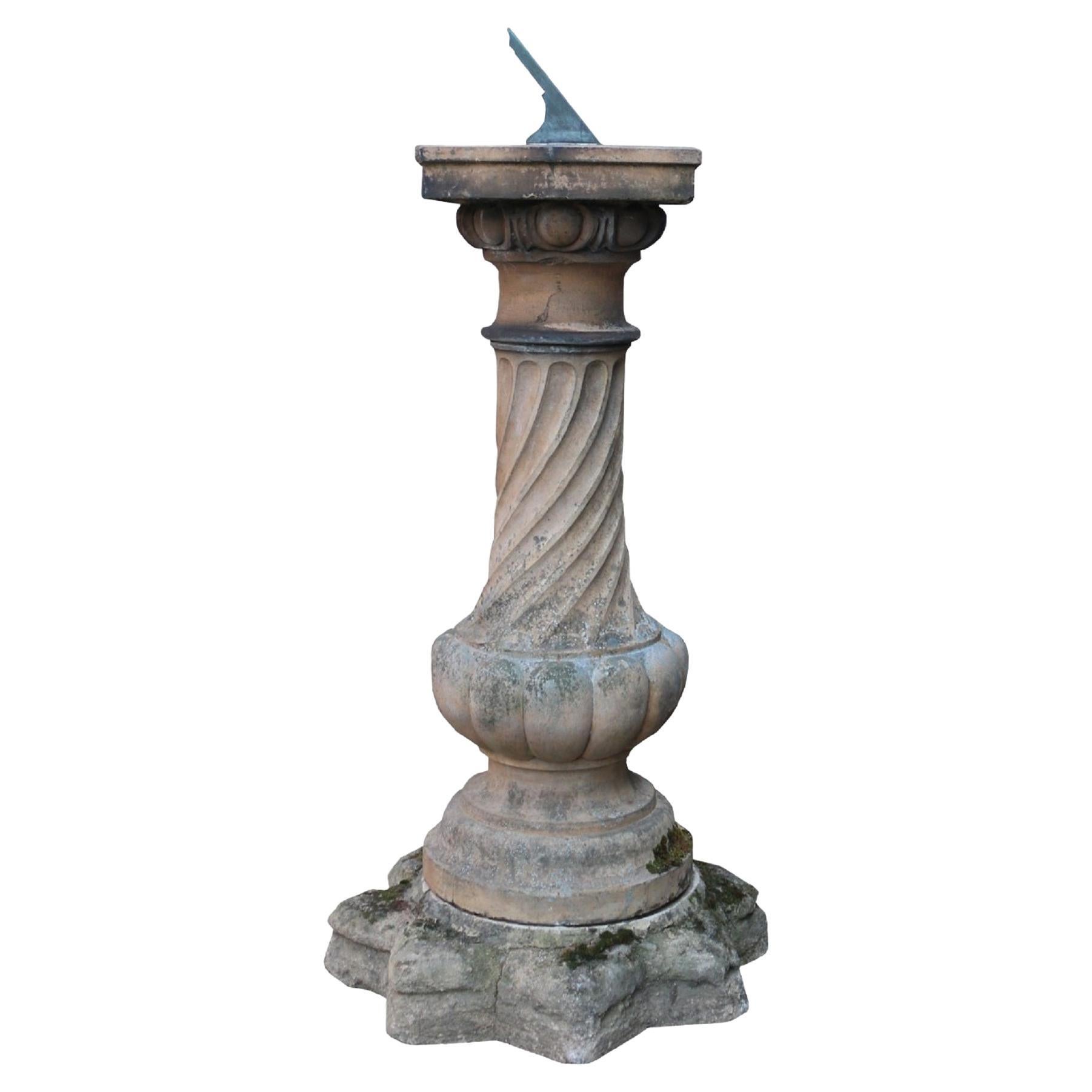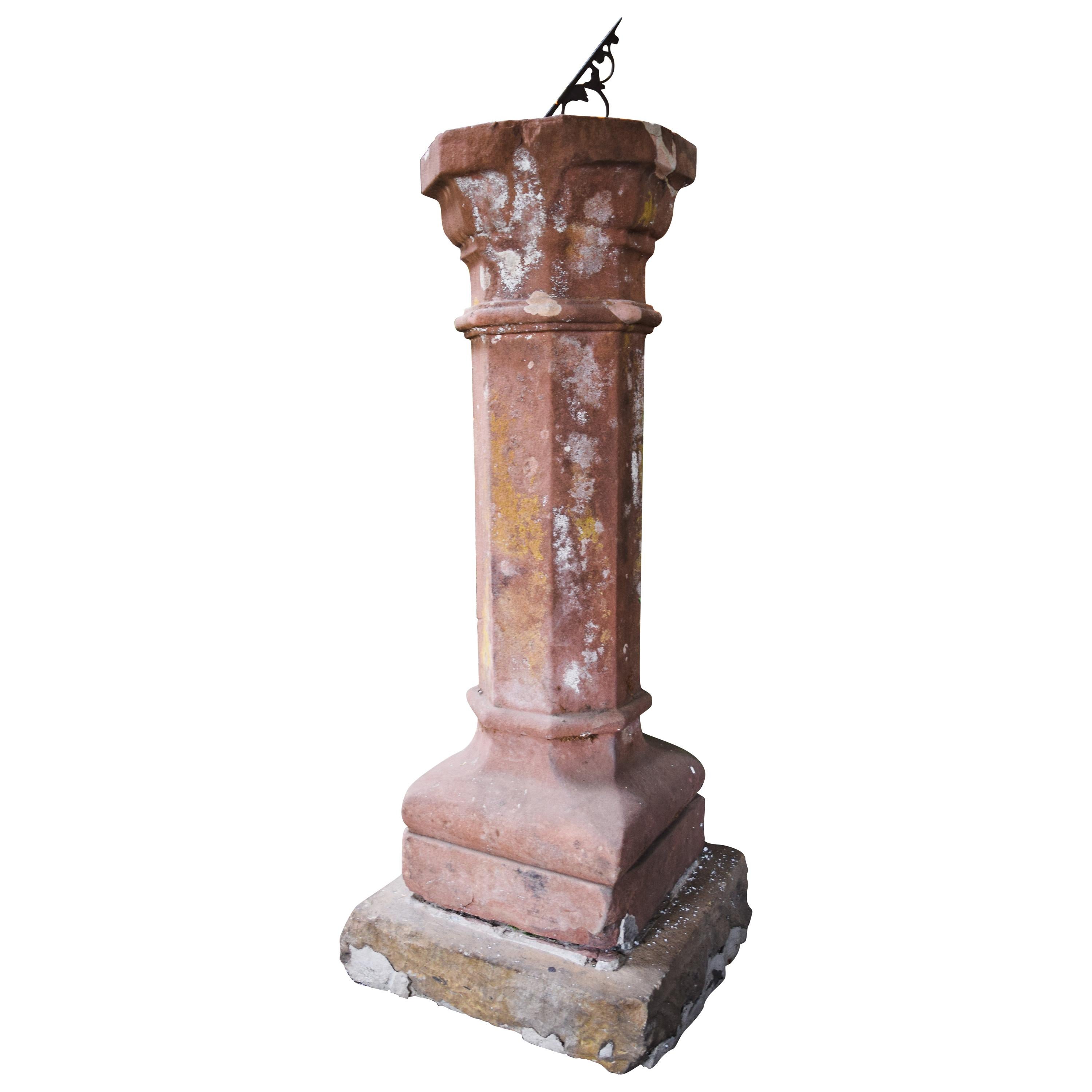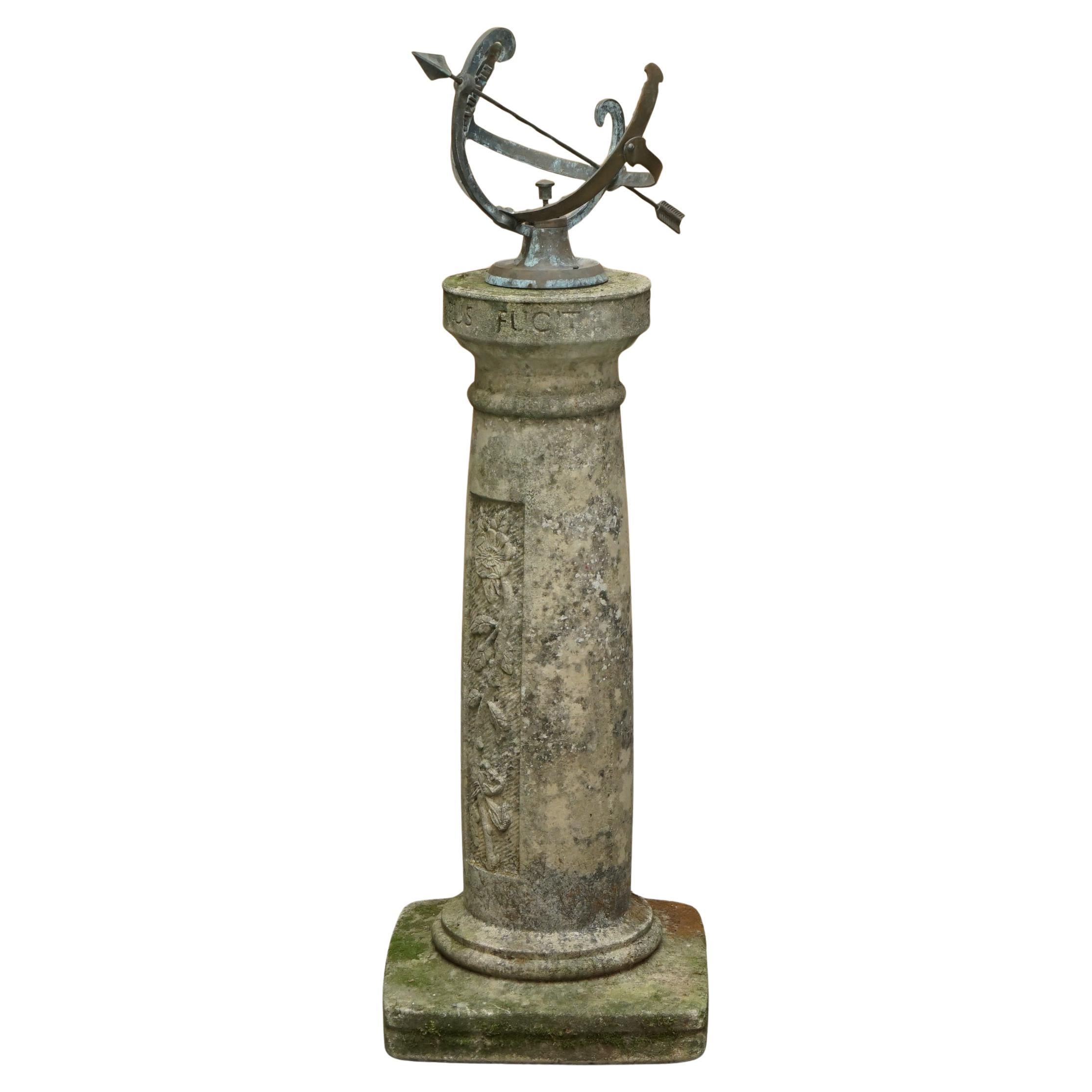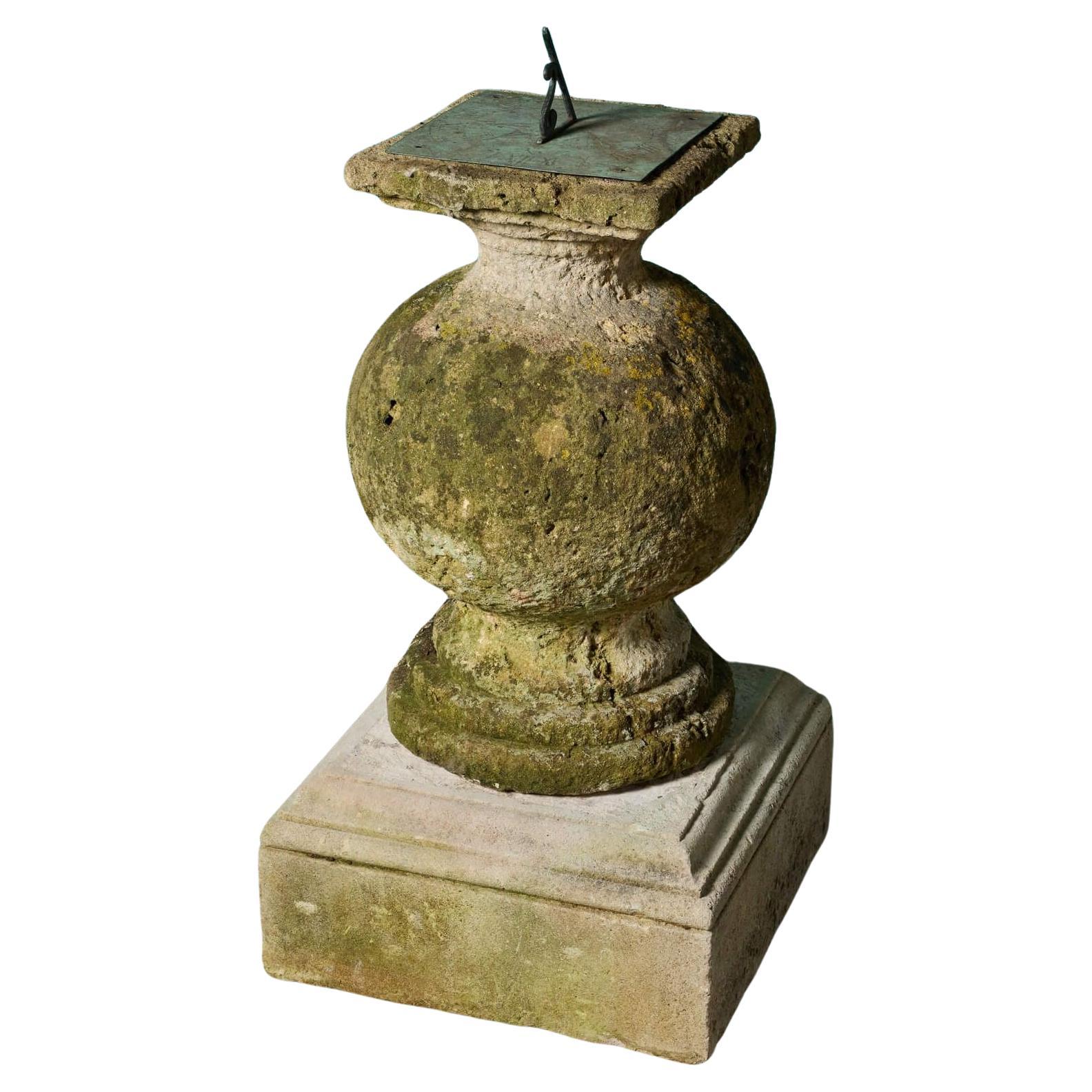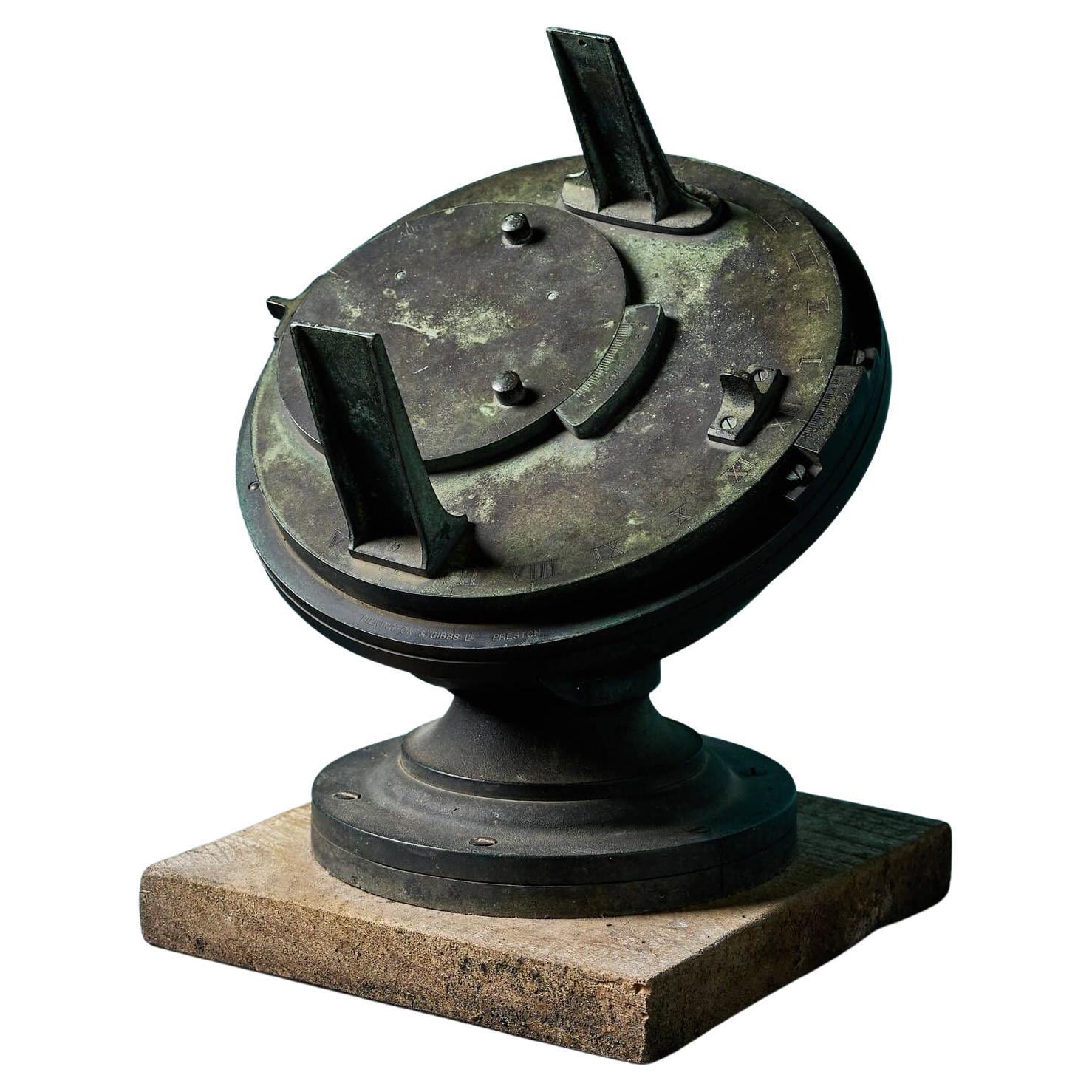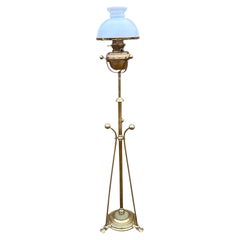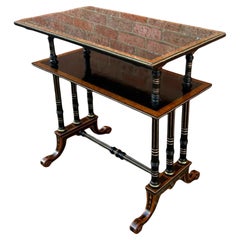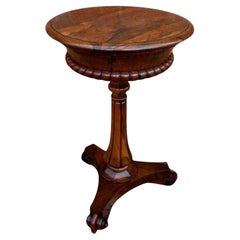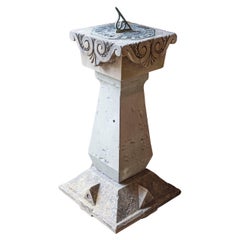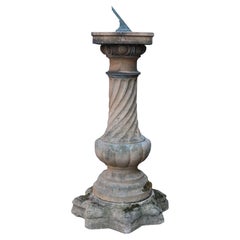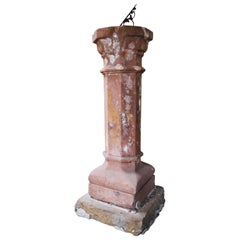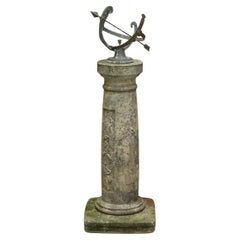Items Similar to Historic Crimean War Sundial from Kinburn Fort - Stone Garden Sculpture
Video Loading
Want more images or videos?
Request additional images or videos from the seller
1 of 13
Historic Crimean War Sundial from Kinburn Fort - Stone Garden Sculpture
$48,178.98
£35,000
€41,145.62
CA$66,647.63
A$73,450.30
CHF 38,453.67
MX$902,201.80
NOK 483,178.73
SEK 452,216.85
DKK 307,210.15
About the Item
This horizontal sundial & stone pillar, an extraordinary artifact of the Crimean War, originated from the 10-Gun Battery at Kinburn Fortress. As the inscription reveals, the sundial was taken following capture of Kinburn Fort, the first Allied occupation of Russian territory in the War of 1854–55, and was likely removed in the days immediately following the battle.
This sundial represents one of the last privately held artefacts & parts from the Kinburn Fortress, which remained under Allied control for the following year before being abandoned. The fortress, destroyed after the battle, has become a site of both historical and contemporary significance, now lying within a contested area in the ongoing Russia-Ukraine conflict.
Kinburn Fortress:
The Kinburn Fortress was located on the Kinburn Spit, a long low-lying sandy spit, at the extreme western end of the Kinburn Peninsula, at the entrance of Dnieper River. It comprised three separate fortifications:
The primary fort, a stone-built, square structure with bastions, mounted 50 guns. Some of these were installed in protective casemates, while others were mounted en barbette, firing over the parapets.
Two earthwork batteries, located west of the fort further down the spit, which mounted from reports between (10-12) and (11-20) guns.
The fortress was destroyed and burned down following the battle. Today, only ruins and a memorial statue remains at the site, which is now a contested area in the current Russia-Ukraine war.
Battle of Kinburn (1855)
The Battle of Kinburn was one of the final campaigns of the Crimean War in the black sea. Taking place on the 17th of October 1855, it was a combined land-naval operation that marked the first successful use of ironclad warships in combat. French and British forces, supported by an Anglo-French fleet, decisively bombarded and overwhelmed the fortress in just three hours.
This engagement marked the first capture of Russian territory by the Allies during the war. With the fortress under Allied occupation for the following year, the sundial—marked "Taken from a 10-Gun Battery"—was likely removed by British forces in the immediate aftermath of the battle.
Provenance & Inscriptions:
This sundial has been part of a private collection for over 50 years, the current owner acquired it at a house auction in the West Suffolk village of Brandon in the 1970s, in an overgrown garden. Mounted on a stone column, the sundial features two distinct inscriptions:
Side 1: Historical Context
"Taken from a 10-Gun Battery on Kilbouroun Spit at the Entrance of the Dnieper, captured by the English and the French in October 1855: Being the First Fort and Portion of Territory Taken by the Allied Forces in the War of 1854-55."
This inscription commemorates the Allied forces’ first occupation of Russian-held territory during the war and states that this war relic was taken specifically from the 10 Gun Earthwork Battery.
Side 2: Sundial Motto
"I mark not the hours unless they are bright,
I mark not the hours of darkness and night,
My promise is solely to follow the sun,
And point out the course his chariot doth run."
Side 3 – Latin Inscription
The sundial also features the Latin inscription: "Non Numero Horas Nisi Serenas"
This translates to “I do not count the hours unless they are clear.”
The Sundial
A horizontal sundial, with roman numerals from 6 am to 6 pm, made from slate. With two Cyrillic inscriptions, И – ‘I’ and Б - ‘be’, are believed to be the inscriptions of a maker.
Sundials in Fortresses
Before the advent of accurate mechanical clocks in the 19th century, sundials were a reliable method of timekeeping, particularly in outdoor settings such as fortresses. They were essential for maintaining strict schedules for guard rotations, drills, and artillery operations. Their durability made them ideal for withstanding harsh outdoor conditions without mechanical upkeep. In coastal fortifications like Kinburn, sundials occasionally played a secondary role in navigation and astronomical observations, aiding in understanding tides and daylight hours.
Included is documents and plans for the Kinburn fortress and battery designs, all from the national archives.
- Dimensions:Height: 53.27 in (135.3 cm)Width: 23.43 in (59.5 cm)Depth: 23.43 in (59.5 cm)
- Materials and Techniques:
- Place of Origin:Ukraine
- Period:
- Date of Manufacture:Unknown
- Condition:Wear consistent with age and use.
- Seller Location:King's Lynn, GB
- Reference Number:1stDibs: LU10441244918752
About the Seller
New to 1stDibs
Joined in the past six months.
No Reviews Yet
Vetted Professional Seller
Every seller passes strict standards for authenticity and reliability
Established in 2024
1stDibs seller since 2025
Typical response time: <1 hour
- ShippingRetrieving quote...Shipping from: King's Lynn, United Kingdom
- Return Policy
Authenticity Guarantee
In the unlikely event there’s an issue with an item’s authenticity, contact us within 1 year for a full refund. DetailsMoney-Back Guarantee
If your item is not as described, is damaged in transit, or does not arrive, contact us within 7 days for a full refund. Details24-Hour Cancellation
You have a 24-hour grace period in which to reconsider your purchase, with no questions asked.Vetted Professional Sellers
Our world-class sellers must adhere to strict standards for service and quality, maintaining the integrity of our listings.Price-Match Guarantee
If you find that a seller listed the same item for a lower price elsewhere, we’ll match it.Trusted Global Delivery
Our best-in-class carrier network provides specialized shipping options worldwide, including custom delivery.More From This Seller
View AllAntique Floor Standing Brass Pole Oil Lamp with White Glass Shade & Tripod Base
Located in King's Lynn, GB
A stylish large adjustable antique standing floor brass oil lamp with a milk white glass shade. With a brass tripod supporting the main column, each detailed with brass balls to each...
Category
Antique Late 19th Century British Late Victorian Floor Lamps
Materials
Brass
Victorian Aesthetic Movement Amboyna Ebonised & Brass Dumbwaiter Two Tier Table
Located in King's Lynn, GB
A Victorian Aesthetic Movement Burr Amboyna, & Brass Dumbwaiter Two Tier Table. Two tiers, inlaid, gilt detailed legs and brass edged top to bottom. Finished off with a glass top. W...
Category
Antique 19th Century British Aesthetic Movement Side Tables
Materials
Brass
Vintage Farm Animal Bronze Horned Bull Statue With Black Marble Base After Barye
By Antoine-Louis Barye
Located in King's Lynn, GB
This is a vintage decorative bull statue. A Continental, bronze and marble desk ornament in the manner of A.L. Barye, dating to the mid 20th century, circa 1960.
Fascinating study ...
Category
20th Century British Animal Sculptures
Materials
Marble, Bronze
Antique William IV Rosewood Teapoy Occasional Tripod Base Table & Tea Caddies
Located in King's Lynn, GB
A Antique William IV (1830-1837) Rosewood Teapoy. The word ‘teapoy’ stands for ‘three feet’, therefore a tripod. This has a beautiful column to centre and gadrooned carvings to the b...
Category
Antique 19th Century British William IV Side Tables
Materials
Glass, Rosewood
Antique Victorian Aesthetic Movement Ebonised Brass & Amboyna Card Side Table
Located in King's Lynn, GB
A very good quality Victorian Aesthetic Movement Card/ Games Side Table on casters. This is made from Amboyna and Ebonised wood, with a floral patterned embossed in the top. The top ...
Category
Antique 19th Century British Aesthetic Movement Game Tables
Materials
Brass
18th Century Georgian Oak Brass Dial 8 Day Grandfather Clock by Richard Houton
Located in King's Lynn, GB
Here we have a beautiful working 18th Century, circa 1770-1790, Oak & Mahogany Crossbanded Grandfather Clock/ long case clock of slender proportions by Richard Houton Of Oversly Gree...
Category
Antique 18th Century British Georgian Grandfather Clocks and Longcase Cl...
Materials
Brass
You May Also Like
English Late 19th Century Sundial with Carved Limestone and Bronze Top
Located in Atlanta, GA
An English sundial from the late 19th century, with carved limestone and bronze top. This English sundial features an obelisk-shaped base, raised on a pyramidal plinth, with cut-off ...
Category
Antique Late 19th Century English Sundials
Materials
Sandstone, Bronze
Antique John Pulham & Son Garden Sundial
Located in Wormelow, Herefordshire
A rare antique John Pulham & Son Sundial standing on a Pulamite star base. The bronze sundial is inscribed Pulham & Son, 50 Finsbury Square, London. Pulham & Son were active at this ...
Category
Antique Late 19th Century English Regency Architectural Elements
Materials
Terracotta
Scottish Sundial
Located in Bloomfield Hills, MI
An eternally functioning timepiece, this 19th century Scottish sundial adds a bold statement to every environment. Atop a grand sandstone pillar, thi...
Category
Antique 19th Century Scottish Sundials
Materials
Sandstone
$10,175
VINTAGE CIRCA 1950's WEATHERED ARMILLARY SUNDIAL WITH STUNNING PATINATION
Located in West Sussex, Pulborough
Royal House Antiques
Royal House Antiques is delighted to offer for sale this exquisite heavily weathered Armillary Sundial with beautifully aged patination
Please note the deliver...
Category
Vintage 1950s English Victorian Sundials
Materials
Stone, Cement, Copper
Antique 18th Century George II Limestone Sundial
Located in Wormelow, Herefordshire
An antique mid 18th century George II limestone sundial with a bronze sundial plate. Dating to circa 1750, this striking English sundial showcases an unusual bulbous shape on an impr...
Category
Antique Mid-18th Century English Georgian Sundials
Materials
Stone, Limestone, Metal, Bronze
Rare Pilkington & Gibbs Ltd Antique Heliochronometer Sundial
Located in Wormelow, Herefordshire
A rare antique brass heliochronometer sundial by renowned makers Pilkington & Gibbs Ltd.
Suitable for interior and exterior use, this sundial has characterful weathering to create a...
Category
Early 20th Century English Victorian Sundials
Materials
Metal, Bronze

